#aa sca yr 3 sem 1 week 11
Explore tagged Tumblr posts
Text
Art Studio 1 Projection/installation test 2 (16.5.24)
The purpose of this test was to practice setting up the installation, based on one of the alternative installation sketches.
I've also marked places for where the fabric strips would be hung. Note that one piece of batiste fabric was used for two different placements (since I didn't have one piece), and that the string used at this point was supposed to be a placeholder.
From previous readings, I felt that creating a 3D space through projecting onto both the fabrics and the wall would expand upon the visual experience (subtle differences in colour, lighting and shape definition of the projected footage).
Below are the measurements I recorded for both the spacing and the desired dimensions of the fabric strips:
Distance between anchor points (and fabric strips) = 82.2cm
Distance from bar to top of fabric when it's level (est.) = 38.2cm
Fabric (batiste) = 56cm x 150cm













0 notes
Text
Art Studio 1 Technical Group Lecture: Communication (6.5.24)
Lecture (by Joshua Boerma)
Communication is important for every stage of artmaking, especially:
When pitching your artwork
When speaking to a curator
During a job interview
Installing your final work/s for an exhibition
In instances where you need to outsource services (e.g. printing, hiring equipment/studios, metal/wood cutting) or materials.
Think about communicating things about yourself to your audience (curator, supplier, art audience, etc.):
Are you planning your tone to be formal/informal?
What medium are you planning to communicate through?
Note that writing an email is not the same as text messaging your friend.
Introduce yourself.
Be considerate of the other person's time.
Be prepared and know what you want. (Are you are student? Are you a business? If you are not studying, you should consider yourself as a commercial entity or a professional entity. Even if you aren't an expert in the field.)
It is ok to say you don't know something. It is better to ask for clarification.
Language is important. Where possible, modify your language to the scenario.
If requesting a service, communicate everything you need (dimensions, material quality/type, finish, etc.), consider the timeline for that service to be done, and always ask for a quote to confirm the full price. If possible, you may also need to ask for samples of the material to ensure that you know what you're getting.
Follow-up emails to confirm past phone calls are very helpful.
0 notes
Text
Art Studio 1 Excursion: ArtSpace, AGNSW and MCA - PART 2 (10.5.24)
MCA: 24th Sydney Biennale
Juan Davila's oil paintings
Row 1: Untitled (2021), Untitled (2023)
Row 2: Untitled (2021), After Image Wilderness (2010)




Description: "Asked why he chose painting, Juan Davila once answered, 'An enjoyment … does not need explanation. Over an artistic career spent lacerating political figures, government policy and state control, the artist has indeed consistently refused to explain himself. From the outset, Davila's paintings have unflinchingly interrogated cultural, sexual and social identities, taking cues from popular culture, political discourse and mythology to create a complex and provocative body of work. Born in Chile, Davila moved to Naarm/Melbourne in 1974 after the fall of the socialist Allende government. However, his work does not suggest what 'should be', instead richly-illustrating the joys, anxieties, shames and triumphs of the contemporary moment. Psychological and psychoanalytic themes are often present, but the artist refuses to articulate or reveal a clear position, prompting us to question our own biases."
Freddy Mamani
Left to right: Diablada (2024, wood coated in gloss enamel), Salon Gallo de Oro (2024, maquette)


Description: "For the past 15 years, Aymaran architect Freddy Mamani has been designing and building Cholets, a combination of the French word 'chalet' and 'cholo', a reappropriated term once used to disparage those of indigenous descent in Bolivia. Interrupting the monotony of the existing cityscape with his vibrant and distinct neo-Andean style, each Cholet recalls the colours, designs and patterning unique to the Aymara culture. The title Diablada, in particular, recalls the Danza de los Diablos, an Andean cultural dance characterised by performers wearing carnivalesque costumes of trickster devil characters. Neo-Andean architecture largely emerged during the presidency, from 2006 to 2019, of Evo Morales, who was Bolivia's first indigenous leader in the country's 200-year history. It can be seen as a consequence of both his economic policies, which empowered a generation of Aymara business people, and of the sense of pride he instilled in the country's indigenous majority. Designed specifically for the needs of the Aymaran people, each Cholet is three to seven storeys high and follows the same essential layout; the ground floor is dedicated to commercial activities, the middle floors to cultural events, while the upper floors are residences. In this way, each Cholet develops and sustains its own economy. As Mamani says, 'this architecture has its own language, its own culture, its own identity'."
Left to right: Sergey Parajanov's The Colour of Pomegranates, (Out-takes and camera tests) (1969, film installation - colour film), Frank Moore's Lullaby (1997, oil on canvas with red pine frame)


Description of Parajanov's The Colour of Pomegranates: "The Colour of Pomegranates follows the 18th-century ashug (poet, singer) Sayat-Nova from his time in Georgia's royal court, love affair with a princess, consequent expulsion and journey across the Caucasus, to his death in a monastery. Transcending both traditional narrative and national boundaries to draw inspiration from across the region, much like Sayat-Nova's songs, the film recalls a series of Persian or Armenian illuminated miniatures. Created in the years following filmmaker Sergey Parajanov's disavowal of social realism and before his 1973 arrest by Soviet authorities under false charges, it contains references to the endurance of cultures across the South Caucasus region (Armenia, Azerbaijan, Georgia, as well as Ukraine) in the face of Soviet oppression. Re-edited by Sergei Yutkevich, a key figure of the avant-garde during the 1920s, his version balanced Parajanov's poetic style with the Gosfilmofond's (Russia's state film archive) demands to make the film more accessible. Thanks to documentary filmmaker Daniel Bird and the National Cinema Center of Armenia, the unseen out-takes from The Colour of Pomegranates were presented at the International Film Festival Rotterdam in 2019. Over a hundred canisters of out-takes have survived despite the Soviet authorities blocking its distribution. Such film would typically have been recycled rather than preserved. Starring Sofiko Chiaureli, who plays six characters, The Colour of Pomegranates left a lasting impact on the film industry and survives as a testament to the power of poetry as a form of resistance across centuries."
Description of Moore's Lullaby: "Ernest Hemingway once suggested that each person dies twice, once when they pass away and again when the last person to remember them forgets. However, if someone is forgotten before they die, then it might feel as if they never existed. This was the reality for those who lived through the AIDS crisis. For years, as people became sick and died America's gay community was ignored by the media and government. Painter and activist Frank Moore, who at 48 died with HIV/AIDS, created Lullaby by transforming his own sick bed into a whimsical landscape populated by a herd of buffalo. Given US President Ronald Reagan did not so much as utter the word AIDS until four years into the crisis, Moore suspected that his community, much like the endangered buffalo, was being left to become extinct. Drawing parallels between the AIDS epidemic and burgeoning ecological crises, Moore believed that this was an apocalypse for himself and those he loved."
Serwah Attafuah's Between this World & the Next (2023-2024, film installation - digital animation (3D computer-rendered models), and e-waste on wooden frame)






Description: "Serwah Attafuah's digital creation unfolds in a near-future Ghana, drawing viewers into an Afrofuturistic vista contrasting colonial remnants with utopian hope. The narrative, propelled by burning slave castles, sinking colonial ships and formidable female warriors, weaves a tale that is both haunting and empowering. This work embodies Ghana's matrilineal legacy, while addressing contemporary issues like e-waste dumping, symbolised by a bespoke frame crafted from e-waste and the incorporation of Sakawa, or 'internet magic. Responding to William Strutt's Black Thursday, February 6th, 1851, also on display, Attafuah delves into West African history, land rights and climate impact on its indigenous communities, fostering a dialogue between historical reverence and visionary insight. Through imaginative storytelling, Attafuah challeges conventional viewpoints and incites reflection, offering commentary on transcending historical bounds. Her avant-garde blend of cultural reflections with futuristic aesthetics establishes this work as a conversation between past legacies and speculative horizons, towards a reimagined future."
BONUS: Maria Fernanda Cardoso's Butterfly Drawings - Morpho didius (Peru) (2004, archival butterfly wings, acrylic, silicone and metal)





Description: "First, I wanted to be a scientist but I used more the model of theRenaissance artist, like Leonardo, which was scientist and artist. So lwent into art thinking that I could do both, I could do art and science." - Maria Fernanda Cardoso
"Maria Fernanda Cardoso is renowned for her use of unconventional materials, which often include symbolically charged elements from the natural world. ...a selection of the artist's butterfly drawings, featuring the insect's delicate wings arranged in mandala-like patterns. Underpinning these works is a system of geometry and repetition. The drawings invite us to look more closely and reflect on our complex relationship to the natural world."
0 notes
Text
Art Studio 1 Excursion: ArtSpace, AGNSW and MCA - PART 1 (10.5.24)
ArtSpace: 24th Sydney Biennale
Sana Shahmuradova Tanska's oil paintings
Row 1: Counteroffensive (2022), Apocalypse Survivors #7 (from the Tethys Sea Inhabitants series) (2023), Don't Touch My Circles They Don't Belong to You (2023)
Row 2: Fiery Harvest (2023), Tired Sun, Delayed Sowing, Faithful Sheep (2022), Apocalypse Survivors #2 (from Tethys Sea Inhabitants series) (2023)
Row 3: Homesickness. (Stork) (2022), Untitled (2023), Apocalypse Survivors #1 (from the Tethys Sea Inhabitants series) (2023)
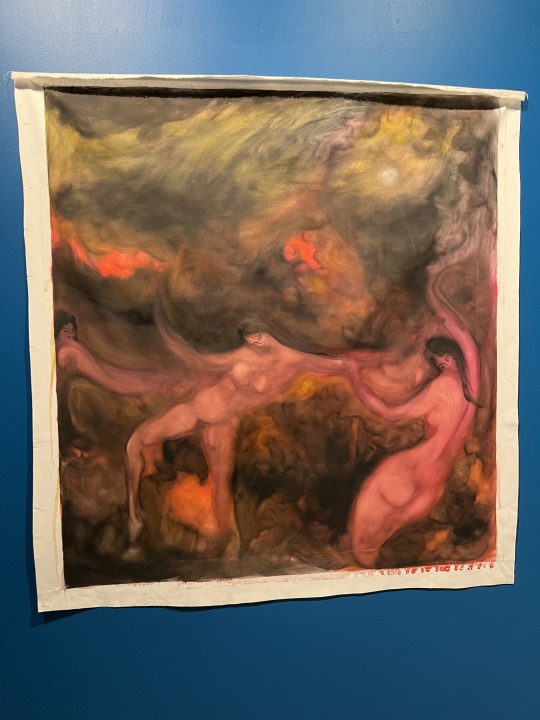


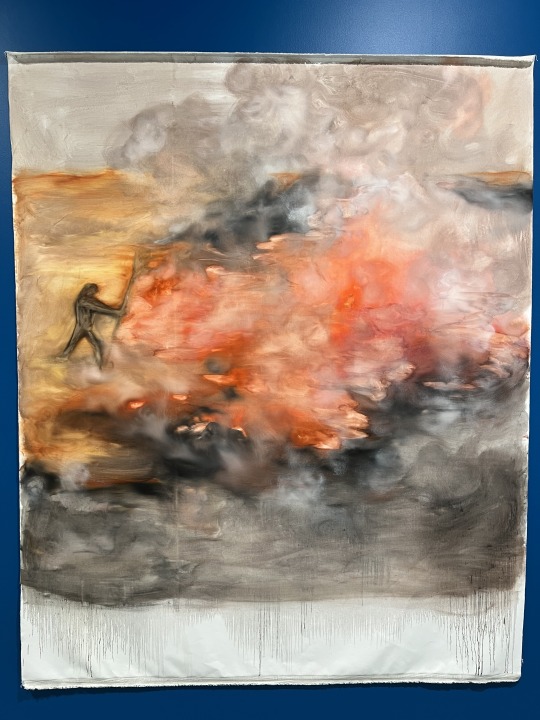
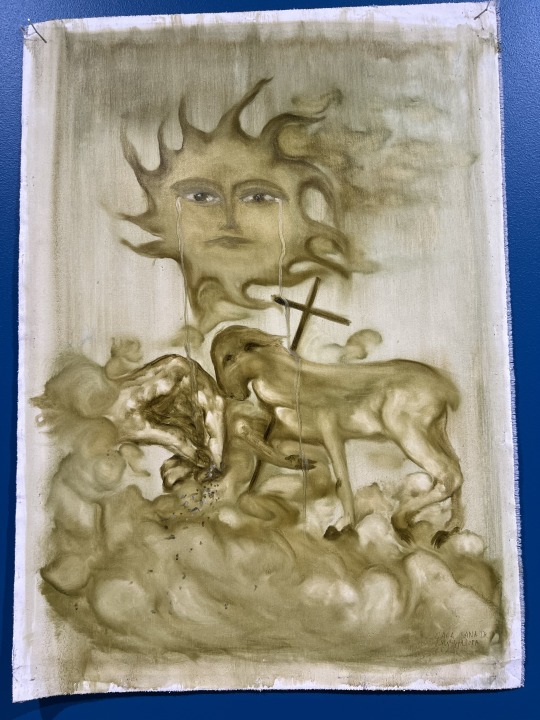

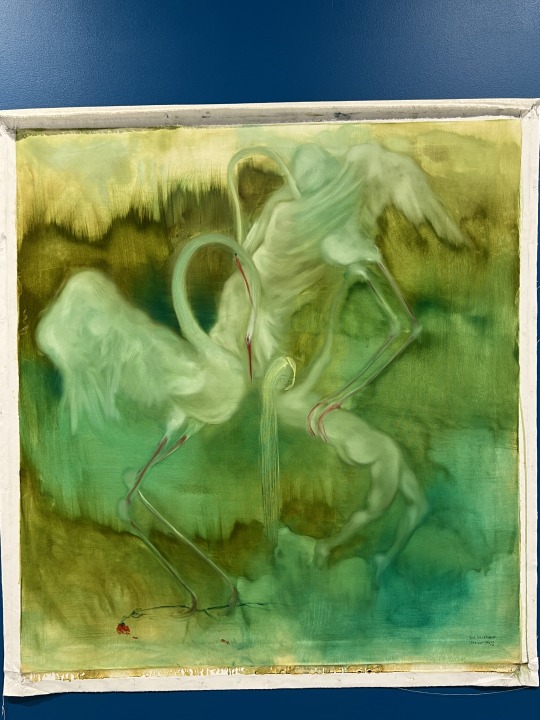
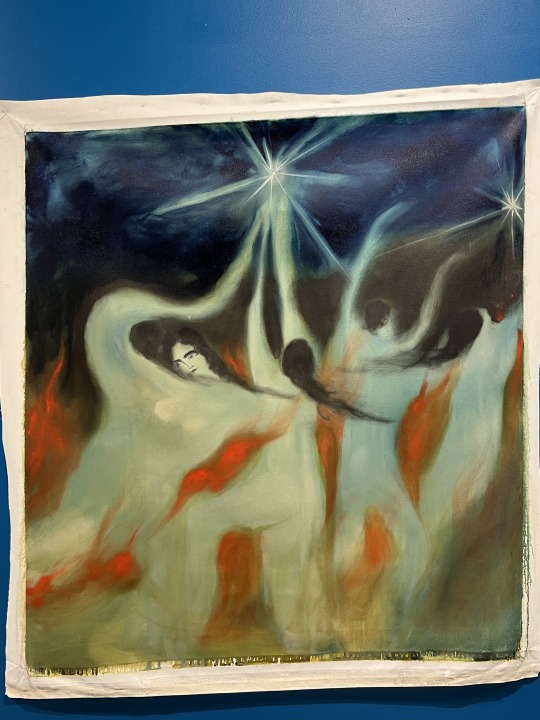

Description: "After spending seven years in Canada, Sana Shahmuradova Tanska returned to Ukraine in 2020, to live and paint from Kyiv... Rendered in oil paint, watercolour and pastel, the poetry and pain of intergenerational trauma floats across a war zone on an ocean of colour. Drawing on Ukrainian history and folklore for inspiration, Shahmuradova Tanska's dreamy figures inhabit a molten landscape of collective memory, grief and violence.
In the wake of the full-scale invasion of Ukraine in February 2022 - a continuation of a much longer history of occupation, [conflict] and cultural oppression - like a pebble thrown in still water, with each ringed ripple an echo of the one that came before it, Shahmuradova Tanska believes the distance between past and present traumas is collapsing.
In the Those who survived the apocalypse/The inhabitants of the Tethys series, the artist considers the Black Sea as a site of both connection and destruction. Like the limestone that surrounds it, the region's history is constantly undergoing erosion, environmental, colonial and cultural. Much the same way small shells remain, present in limestone dams and caves, so too are stories preserved. Created between shelling attacks, which sent Shahmuradova Tanska to Cold War shelters plastered with old atomic war posters, these paintings stand as a testament to a people who have been pummeled by waves of occupation and invasion but remain as steadfast as the tide."
Trevor Yeung
Row 1: Cuddle Party (Two groups) (2024, Serpulorbis roussaei, vitrine, and found objects)
Row 2: Night Mushroom Colon (Artspace) (2024, night lamps, artificial plants and plug adaptors)
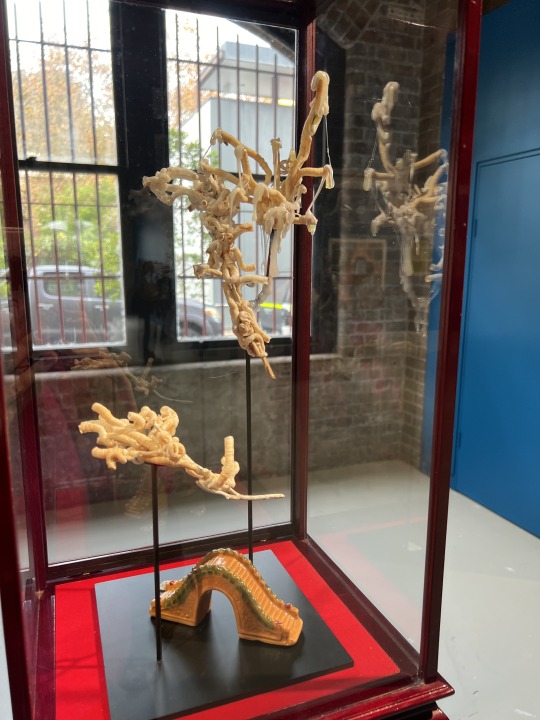
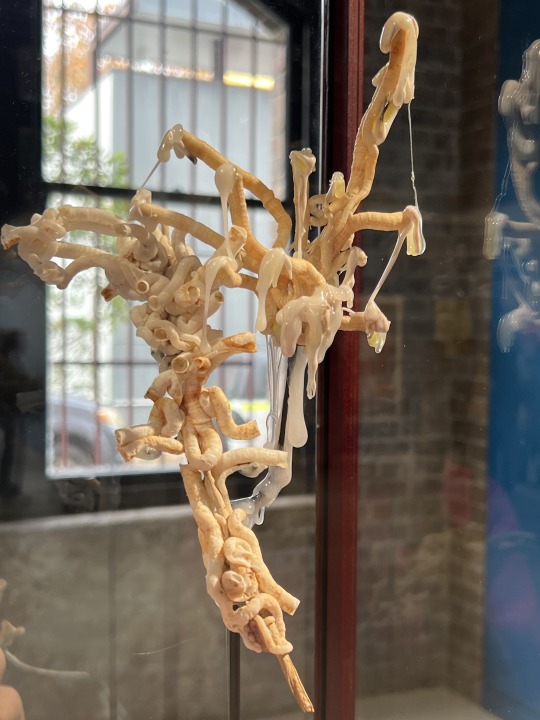
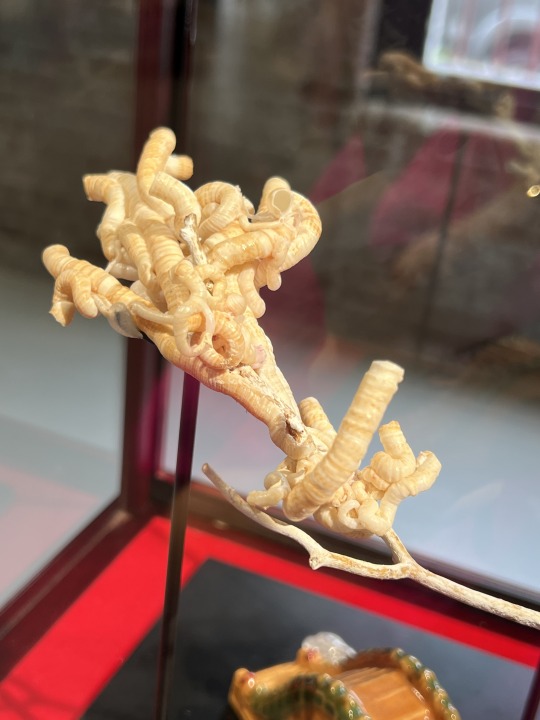
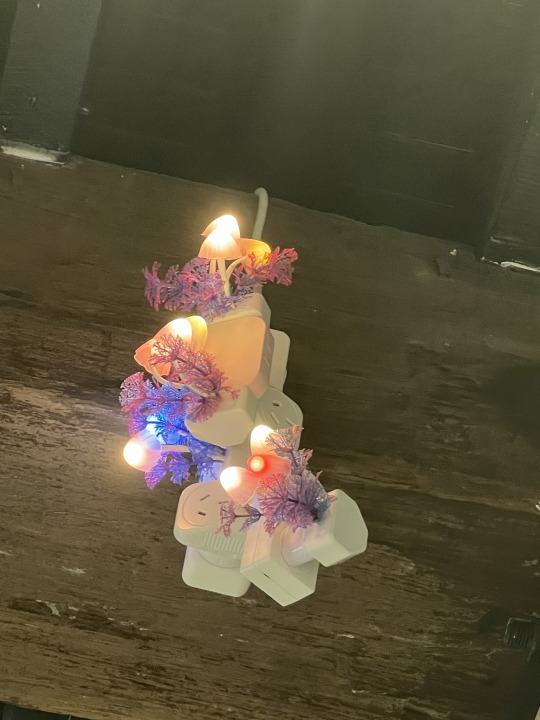
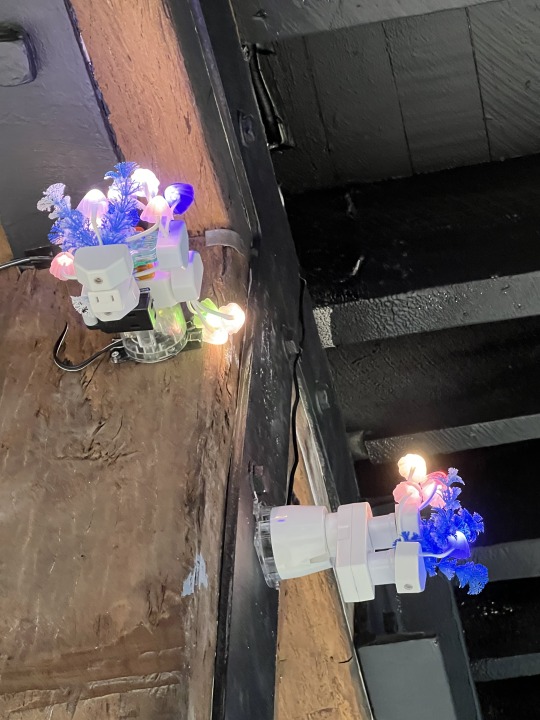
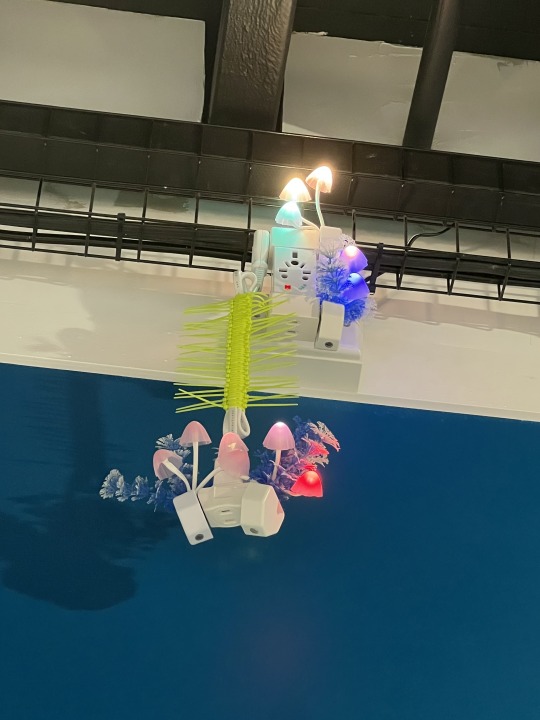
Description: "Trevor Yeung had grown up with many household pets, but during his time living in a college dormitory, where pets were banned, he started caring instead for a carnivorous plant whose needs were both specific and demanding. Through this, Yeung realised how crucial it was to cultivate the precise conditions that sustain life. Currently, he is creatively focused on understanding how social conditions shape emotional engagement. His practice ranges from image-based work to large- scale installations, creating structures that allow him to explore the power dynamics between living beings, including plants, animals, as well as the viewers. Using his installations as cyphers for his own emotional reality, Yeung often reveals the artificiality of perceived natural' connection.
In Cuddle Party (Two groups) Yeung transforms seashells into a shrine for love and relationships. Much how some may fill a vitrine with treasured objects or a small statue of a god, the work is a dedication to romantic fantasies. At once sweet and intimate, it is underwritten by ideas of worship and what the artist describes as "a situation of taking sides".
Nearby Night Mushroom Colon (Artspace) combines electrical converters and nightlights to give off a gentle bioluminescence barely noticeable to a casual passerby. Appearing to grow almost secretly, these mushrooms thrive and reproduce independently through "polyamorous converters and tempting colours", in Yeung's words. Their apparent disinterest in, and distance from, human agency offers a viable alternative to the entanglement of human lives lived large, loudly and interdependently."
AGNSW: "What Does the Jukebox Dream of?"
In order from left to right: Callum Morton's Screen #7: Here and there (2006, wood and acrylic), Fiona Hall's Slash and burn (1997, 36 video boxes, 36 videotape sculptures and wire suspension grid), Paul Chan's Oh why so serious? (2008, 36 video boxes, computer keyboard, plastic and electronics)
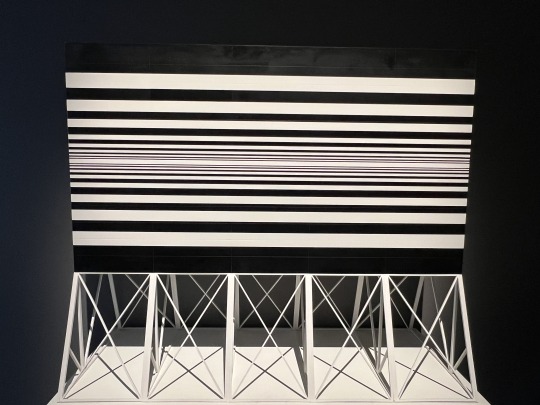
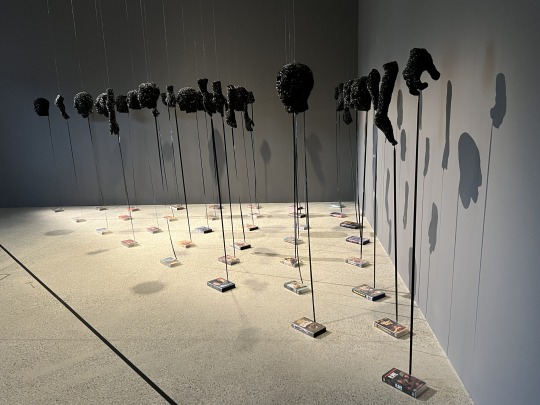
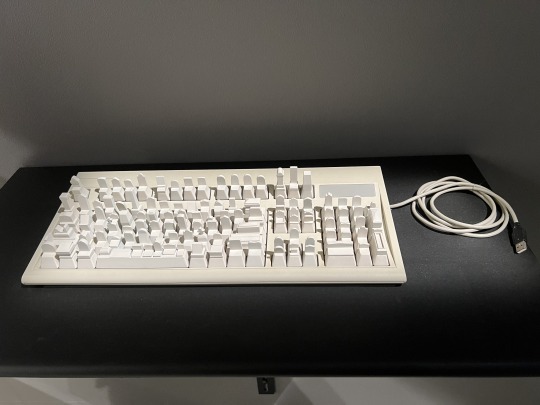
David Haines and Joyce Hinterdinge's The Outlands (2011, interactive software program, projector, colour, sound, customised joysticks with twigs and table)
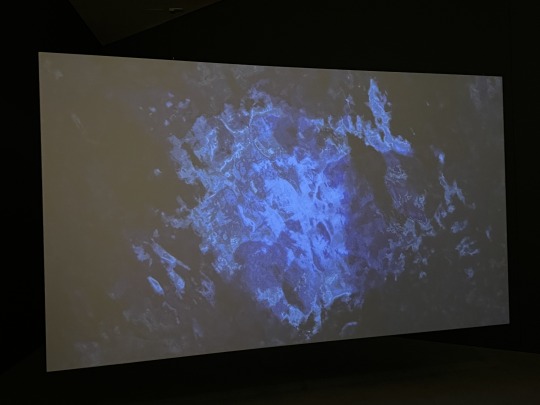
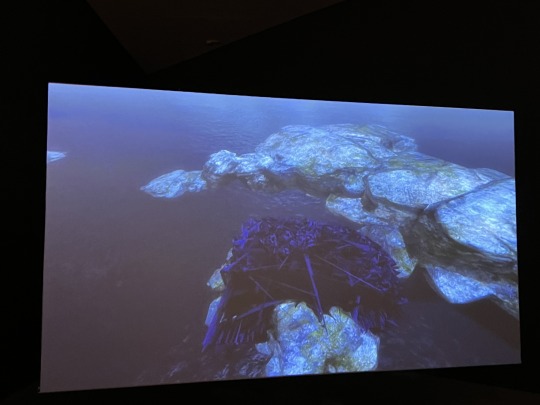
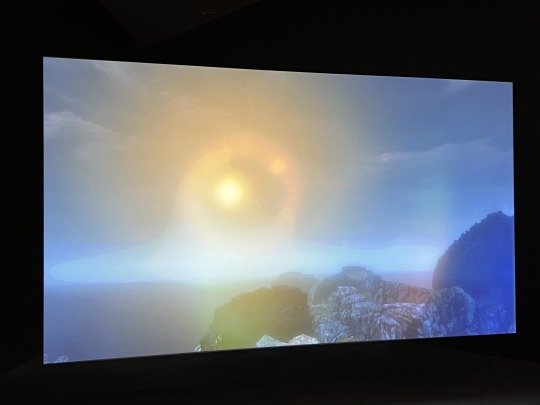
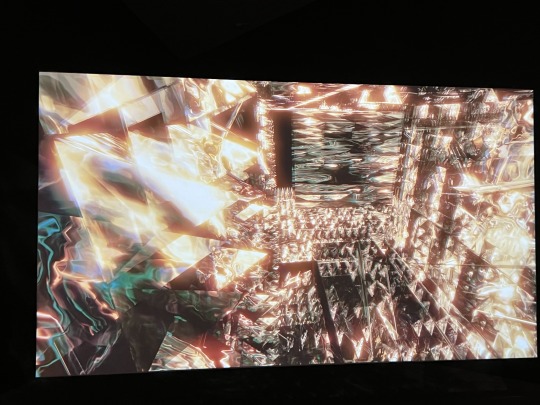
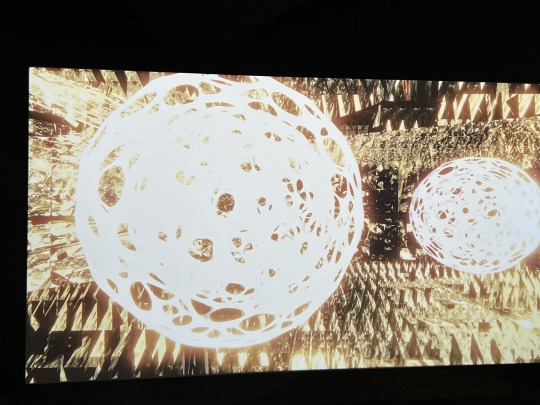
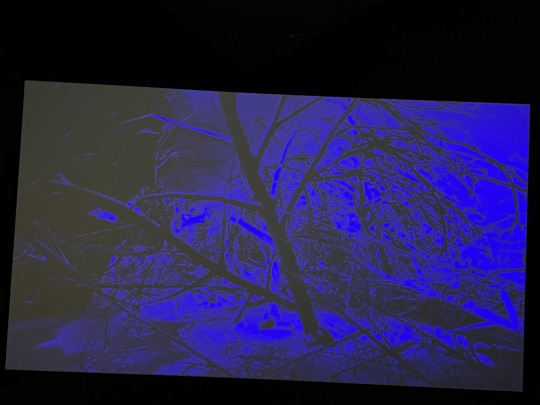
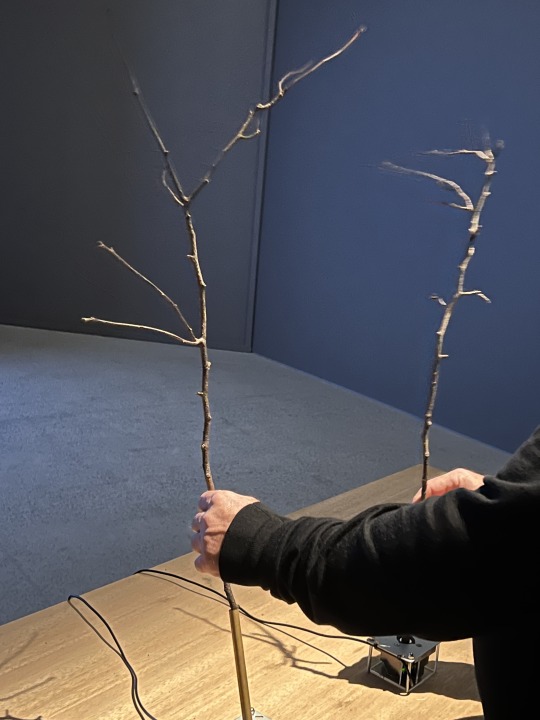
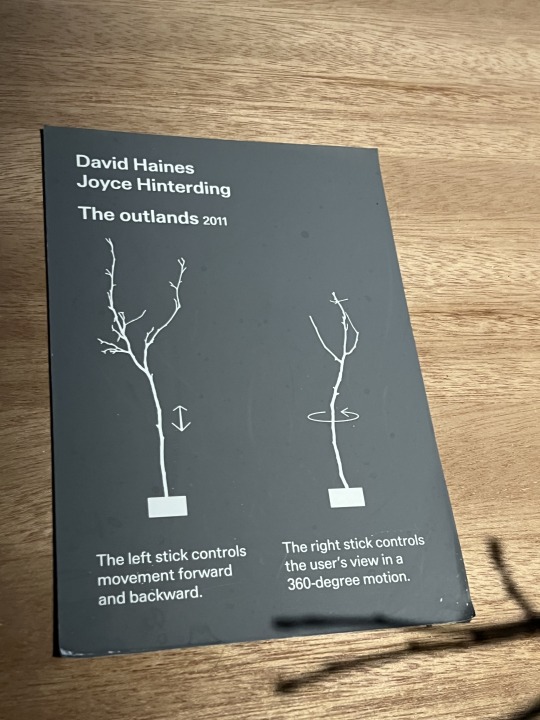
Description: "David Haines and Joyce Hinterding reimagine the 'natural' environment of video games. Experimenting with early gaming software, the pair hack code and alter in-built pre-sets - which assume first-person shooter mode - to conjure a digital universe devoid of weapons and violence. The logic of 'killing and winning' that guides many games is replaced here by an ethos of unstructured, exploratory voyaging. Navigate crystal mazes and cyber seascapes with joysticks made of cherry blossom twigs. Search for the 'cracks' in the game's glitchy architecture to journey between worlds. Don't worry: getting stuck in a digital swamp or freezing mid-teleport is all part of the fun of experiencing this innovative early-software-based artwork."
#sca projects#thingstonoteforfutureprojects#art gallery#year 3 art studio project 1#aa sca yr 3 sem 1 week 11
0 notes